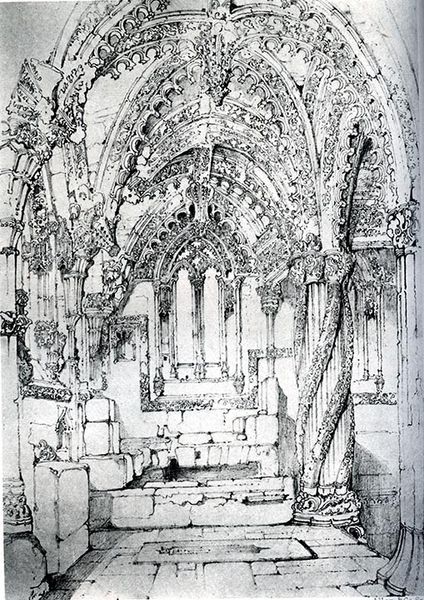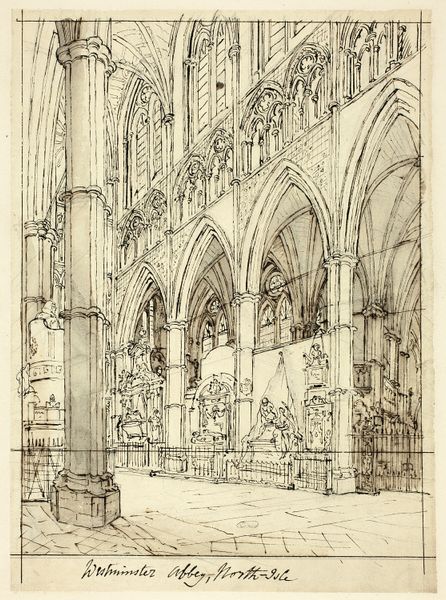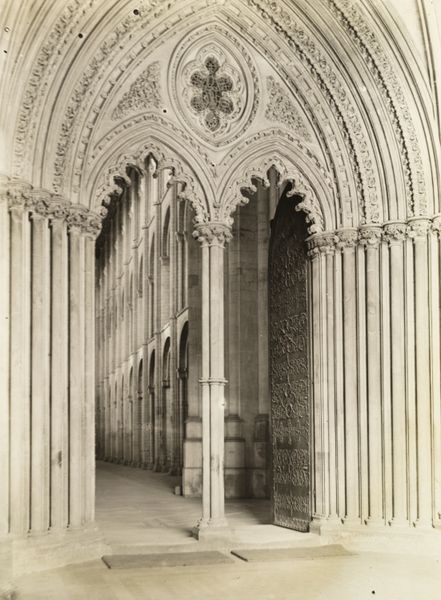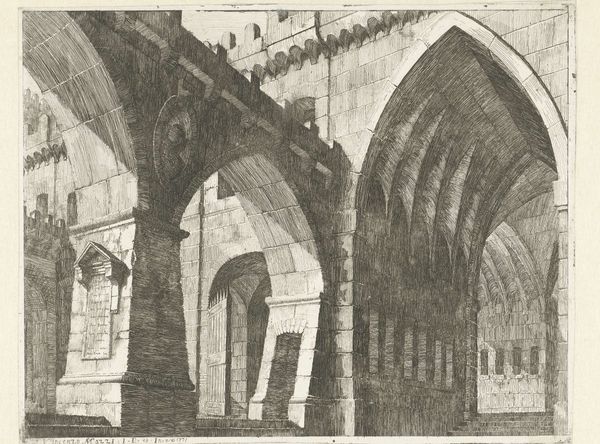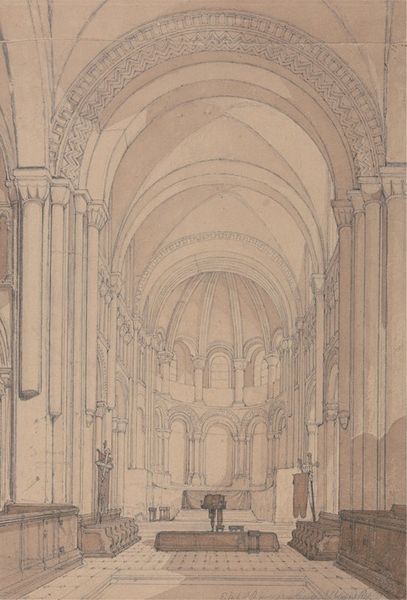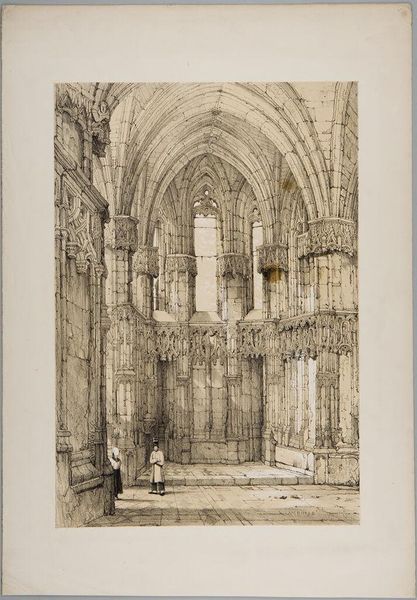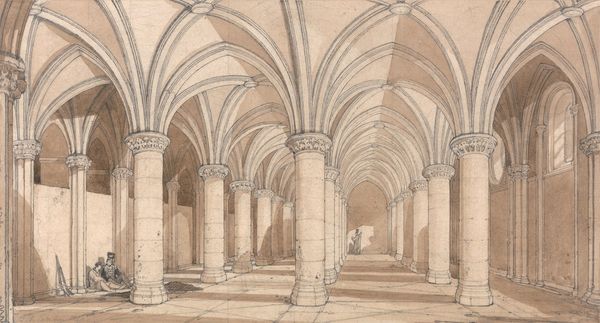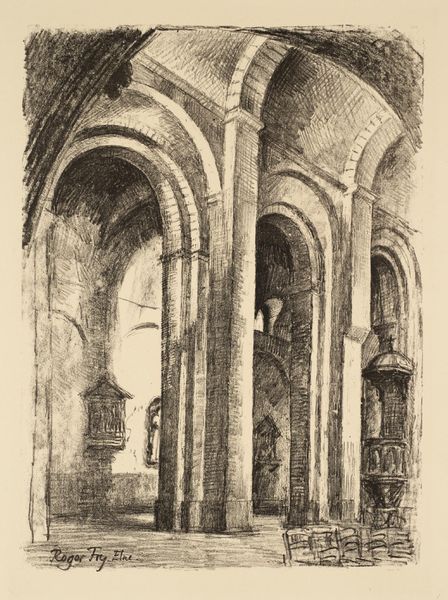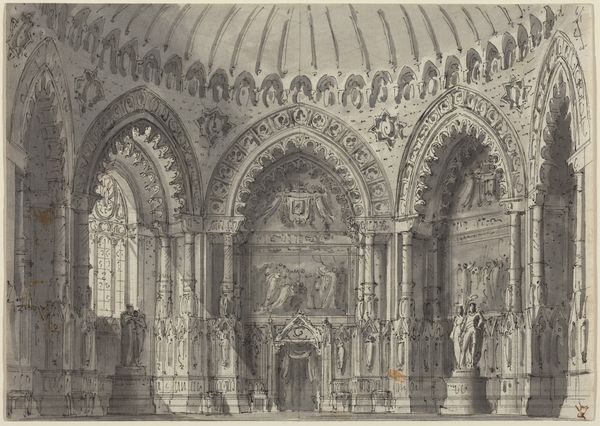
Copyright: Public domain
Curator: Roslin Chapel, rendered in 1838 with ink on paper by John Ruskin, a master of observation and detail. What are your first thoughts looking at it? Editor: It evokes such a strong sense of solemnity and grandeur. The lines are incredibly precise, but somehow also very ethereal, it is really magical. I immediately think about who would've moved through that space and the lives that touched the materials in order to complete the structure itself. Curator: Indeed, and it is precisely this relationship between hand, material, and intention that fascinates me here. Ruskin was deeply interested in Gothic architecture, not just for its aesthetic value but for what it revealed about the labor and craftsmanship of its time. The materiality of stone, carved so intricately... Imagine the time and skill that was demanded. Editor: Absolutely. It speaks to the social and cultural significance of religious architecture in the 19th century. Roslin Chapel wasn't just a place of worship; it was a statement of power, wealth, and spiritual belief. The gendered labor behind creating and maintaining this kind of space often went unnoticed. Curator: Precisely. How were these complex carvings and immense spaces commissioned? It really pushes us to understand who controlled those resources and who benefited most directly from its construction. We’re able to reflect on the larger power dynamics embedded within artistic production. Editor: Thinking about that, I see it as a representation of how religious and social hierarchies intertwine. Each carefully carved detail becomes a signifier of a complex societal system, reinforcing established norms, especially around religious institutions and state power. Curator: Yes, we begin to uncover complex layers when analyzing the historical production of a gothic cathedral versus the aesthetic achievement or spiritual context often presented by religious institutions and even art historians. Editor: Agreed. Reflecting on it, Ruskin’s dedication to capture such minute details offers insight into not only his aesthetic appreciation, but also into how places of worship shape and mold the experiences of those that participate in its use. Curator: Yes, the ability to now reflect critically and analyze historical representations allows us to reconsider our perceptions about value, work, and artistic purpose, while confronting histories often rendered silent within canonical discussions. Editor: It truly emphasizes that we can read a single artwork as a cultural object that mirrors its time and social context, filled with ideological tension.
Comments
No comments
Be the first to comment and join the conversation on the ultimate creative platform.
